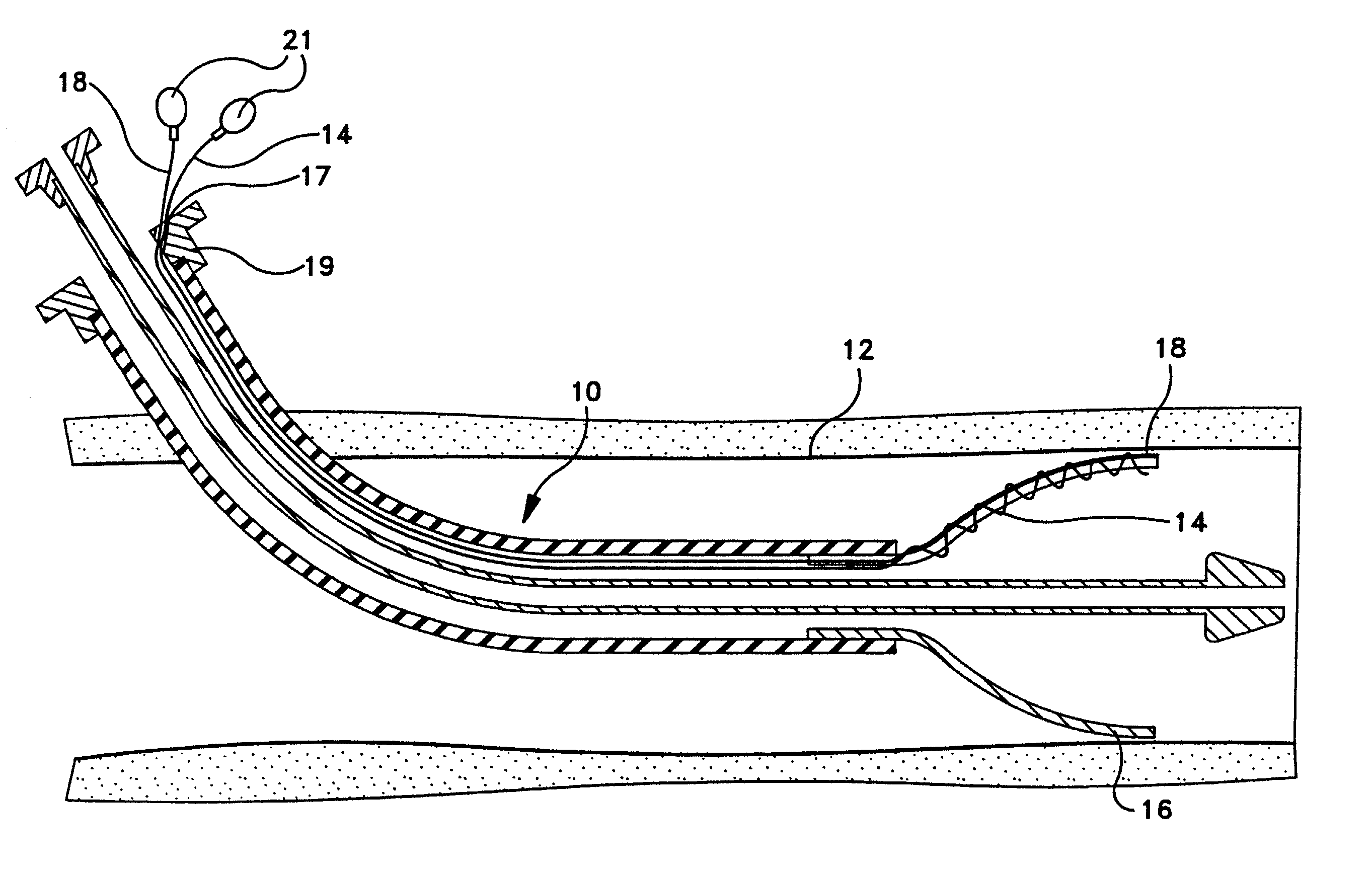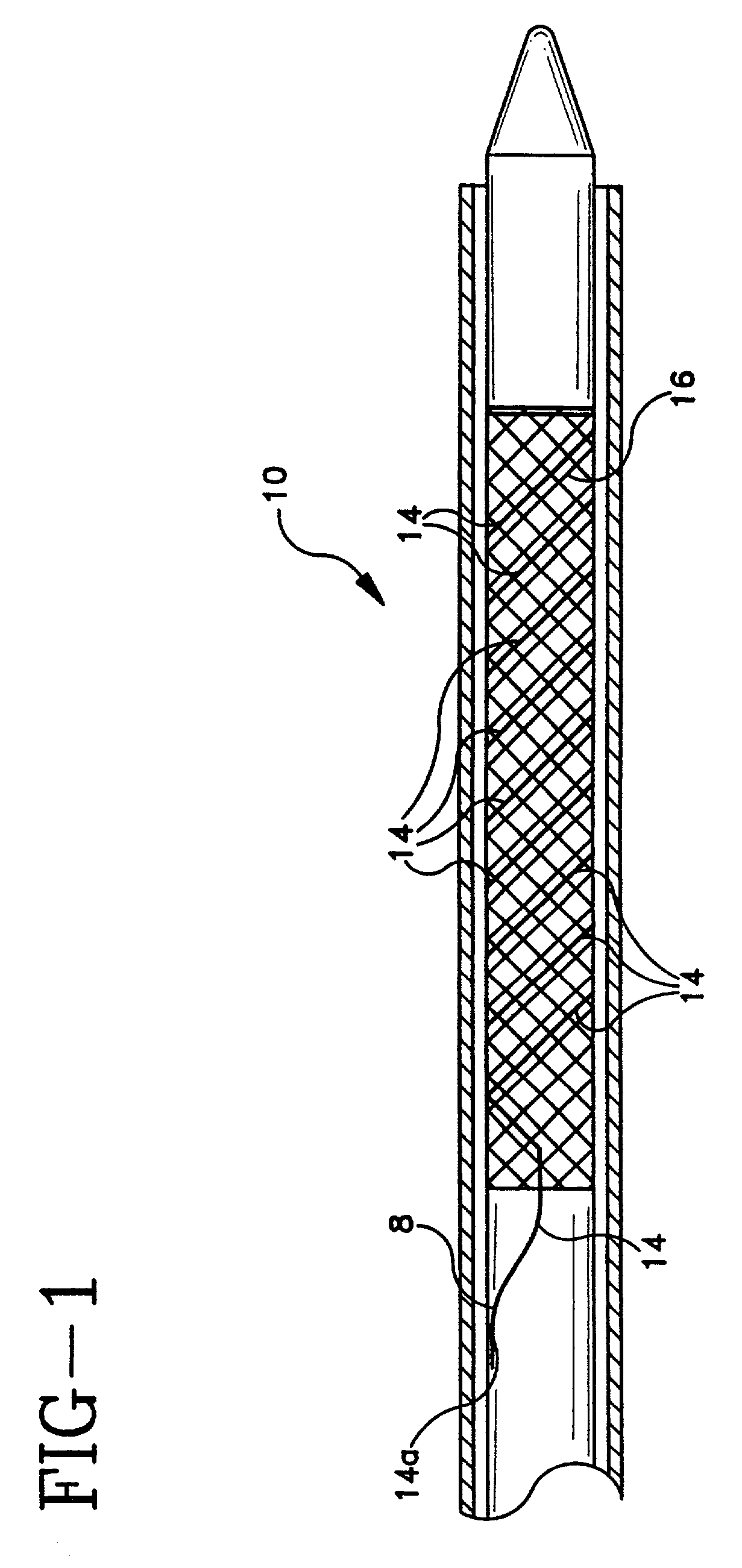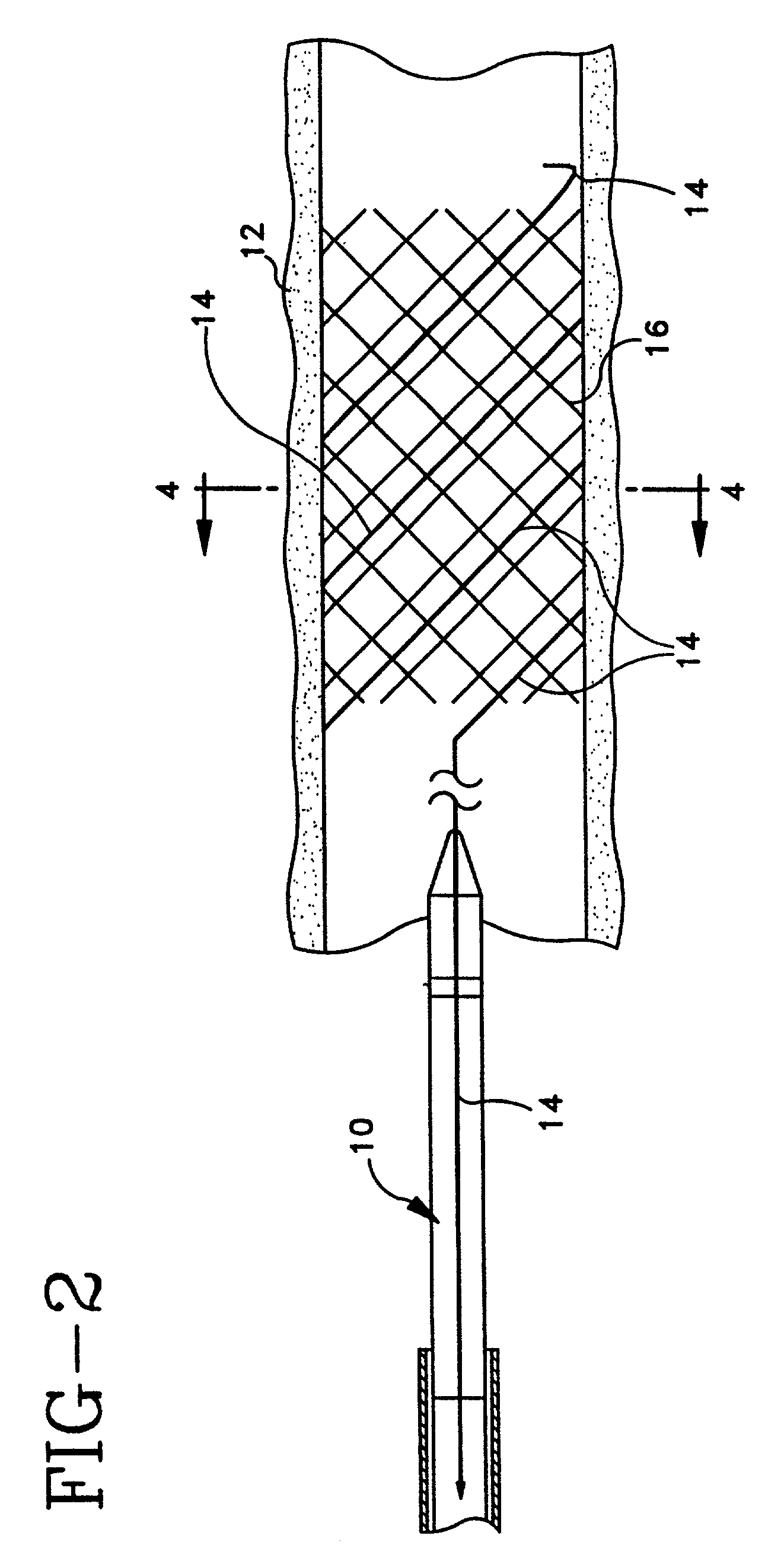Radiopaque markers for implantable prostheses
a radiopaque marker and implantable prosthesis technology, applied in the field of radiopaque markers or discrete radiopaque markers, can solve the problems of not being biocompatible or biostable, compromising structural integrity, etc., and achieve the effect of improving radiopacity and locatability of endoprosthesis
- Summary
- Abstract
- Description
- Claims
- Application Information
AI Technical Summary
Benefits of technology
Problems solved by technology
Method used
Image
Examples
example 1
[0057]A retrievable, temporary radiopaque marker can be in the form of a strand of metal or polymer containing radiopaque elements, oxides, or salts of elements with atomic numbers in the range of from about 22 to about 83 loosely threaded along a helical, circumferential, or axial orientation in an endoprosthesis such as a stent, stent-graft, graft, filter, occlusive device, and valve with a free end of the marker extending out from the endoprosthesis such that it is attached to the delivery system or passed outside of the body and the marker and is separated from the implanted endoprosthesis by pulling it free and out of the body. The radiopaque material has a linear attenuation coefficient of from about 5.46 cm−1 at 50 KeV to about 151.53 cm−1 at 50 KeV.
example 2
[0058]A retrievable, temporary radiopaque marker can be in the form of a strand of metal or polymer containing radiopaque elements, oxides, or salts of elements with atomic numbers in the range of from about 22 to about 83 formed into a spring and disposed within an endoprosthesis such as a stent, stent-graft, graft, filter, occlusive device, and valve with a free end of the marker extending out from the endoprosthesis such that it is attached to the delivery system or passed outside of the body and the marker and is separated from the implanted endoprosthesis by pulling it free and out of the body. The radiopaque material has a linear attenuation coefficient of from about 5.46 cm−1 at 50 KeV to about 151.53 cm−1 at 50 KeV.
example 3
[0059]A retrievable, temporary radiopaque marker can be in the form of a strand of ductile metal wire, ribbon, or braided wire containing radiopaque metallic elements with atomic numbers in the range of from about 22 to about 83, preferably titanium, tantalum, zirconium, and platinum disposed within an endoprosthesis such as a stent, stent-graft, graft, filter, occlusive device, and valve with a free end of the marker extending out from the endoprosthesis such that it is attached to the delivery system or passed outside of the body and the marker and is separated from the implanted endoprosthesis by pulling it free and out of the body. The radiopaque material has a linear attenuation coefficient of from about 5.46 cm−1 at 50 KeV to about 149.08 cm−1 at 50 KeV.
PUM
 Login to View More
Login to View More Abstract
Description
Claims
Application Information
 Login to View More
Login to View More - R&D
- Intellectual Property
- Life Sciences
- Materials
- Tech Scout
- Unparalleled Data Quality
- Higher Quality Content
- 60% Fewer Hallucinations
Browse by: Latest US Patents, China's latest patents, Technical Efficacy Thesaurus, Application Domain, Technology Topic, Popular Technical Reports.
© 2025 PatSnap. All rights reserved.Legal|Privacy policy|Modern Slavery Act Transparency Statement|Sitemap|About US| Contact US: help@patsnap.com



